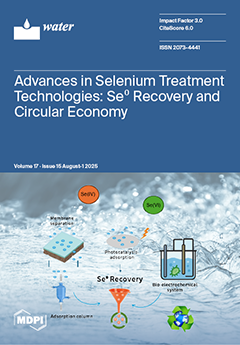South Dongting Lake is an essential aquatic ecosystem that receives substantial water inflows from the Xiangjiang and Zishui Rivers. However, it is significantly impacted by human activities, including mining, smelting, and farming. These activities have led to serious contamination of the lake’s sediments with heavy metals (HMs). This study investigated the distribution, mobility, and influencing factors of HMs at the sediment–water interface. To this end, sediment samples were analyzed from three key regions (Xiangjiang River estuary, Zishui River estuary, and northeastern South Dongting Lake) using traditional sampling methods and Diffusive Gradients in Thin Films (DGT) technology. Analysis of fifteen HMs (Pb, Bi, Ni, As, Se, Cd, Sb, Mn, Zn, V, Cr, Cu, Tl, Co, and Fe) revealed significant spatial heterogeneity. The results showed that Cr, Cu, Pb, Bi, Ni, As, Se, Cd, Sb, Mn, Zn, and Fe exhibited high variability (CV > 0.20), whereas V, Tl, and Co demonstrated stable concentrations (CV < 0.20). Concentrations were found to exceed background values of the upper continental crust of eastern China (UCC), Yangtze River sediments (YZ), and Dongting Lake sediments (DT), particularly at the Xiangjiang estuary (XE) and in the northeastern regions. Speciation analysis revealed that V, Cr, Cu, Ni, and As were predominantly found in the residual fraction (F4), while Pb and Co were concentrated in the oxidizable fraction (F3), Mn and Zn appeared primarily in the exchangeable fractions (F1 and F2), and Cd was notably dominant in the exchangeable fraction (F1), suggesting a high potential for mobility. Additionally, DGT results confirmed a significant potential for the release of Pb, Zn, and Cd. Contamination assessment using the Pollution Load Index (PLI) and Geoaccumulation Index (Igeo) identified Pb, Bi, Ni, As, Se, Cd, and Sb as major pollutants. Among these, Bi and Cd were found to pose the highest risks. Furthermore, the Risk Assessment Code (RAC) and the Potential Ecological Risk Index (PERI) highlighted Cd as the primary ecological risk contributor, especially in the XE. The study identified sediment grain size, pH, electrical conductivity, and nutrient levels as the primary influencing factors. The PMF modeling revealed HM sources as mixed smelting/natural inputs, agricultural activities, natural weathering, and mining/smelting operations, suggesting that remediation should prioritize Cd control in the XE with emphasis on external inputs.
Full article





